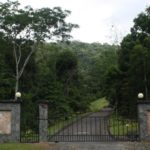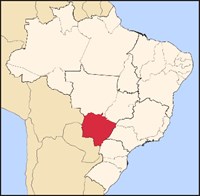 Chagas disease is an anthropozoonosis caused by the protozoan parasite Trypanosoma cruzi that represents a major public health problem throughout Latin America. The Hamer lab studies Chagas disease in the United States, but with help from the VMBS travel grant I was able to explore the ecology of T. cruzi in an endemic environment, in Campo Grande Brazil.
Chagas disease is an anthropozoonosis caused by the protozoan parasite Trypanosoma cruzi that represents a major public health problem throughout Latin America. The Hamer lab studies Chagas disease in the United States, but with help from the VMBS travel grant I was able to explore the ecology of T. cruzi in an endemic environment, in Campo Grande Brazil.
T. cruzi demonstrates extreme biological plasticity. It can infect a wide range of mammalian hosts and is genetically diverse being characterized by seven genotypes. In the US, we find two strain types, while in Brazil they have all seven. The goal of this project was to explore the genetic diversity of T. cruzi in wildlife along the urban-sylvatic interface. While ample research has been devoted to transmission and control of T. cruzi in a domestic or peridomestic environment, many questions remain regarding T. cruzi ecology and transmission along the sylvatic-urban environments. To better understand the sylvatic cycle we sampled wildlife in peridomestic environments and propagated T. cruzi from host blood in pure culture to ascertain the genetic strain type. T. cruzi plasticity within the sylvatic transmission cycle threatens progress towards Chagas disease elimination as spillover from wildlife reservoirs and oral transmission can limit the effectiveness of conventional vector control methods. Our research aimed to provide an ecological basis for disease transmission, which is a necessary prerequisite for developing effective intervention strategies.
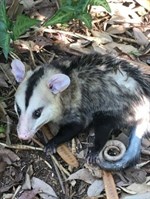 |
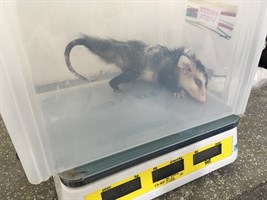 |
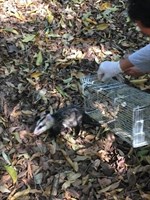 |
For the first three weeks of my project I worked in the city Campo Grande, which is a biologically diverse area with a wide diversity of wildlife species. Here we set up traps in city parks and along urban-sylvatic interfaces. Small mammals were captured by setting up linear transacts with defined capture points using baited Sherman and Tomahawk live traps. Trapped animals were either euthanized for blood sample collection by cardiac puncture for parasitological and serological analyses, or the animal was anesthetized and skin and blood samples were taken. We mostly caught opossums and some small rodents, opossums are a known reservoir for T. cruzi in Brazil. We did also sample a marmoset to see if it was T. cruzi positive (it was not). Additionally, we set up mist nets in the evening to capture bats. Two bats of each species were euthanized for blood and tissue collection, all other bats were tagged and released.
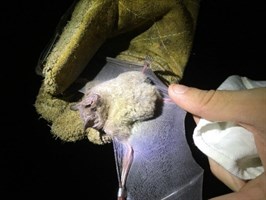 For my remaining time in Brazil, I analyzed the samples at FioCruz in Rio de Janeiro. FioCruz is a well-known public health organization that is at the forefront of Chagas disease research. I worked under the guidance of Dr. Jansen, the head of the trypanosomatids biology laboratory. Here I examined and tested the samples collected in the field. To test for the T. cruzi parasite, fresh blood samples were examined to visualize flagellates and hemoculture was performed. Hemoculture will be performed by inoculating blood into tubes with media and visually examined weekly for three (for seronegative animals) to six weeks (for seropositive animals). Samples were also tested by Indirect Immunofluorescent Antibody Test (IFAT) and ELISA to detect anti-T. cruzi IgG antibodies. While not directly a part of my research there, I got to see their kissing bug colony, which as established over 50 years ago from kissing bugs throughout South and North America. We established a kissing bug colony
For my remaining time in Brazil, I analyzed the samples at FioCruz in Rio de Janeiro. FioCruz is a well-known public health organization that is at the forefront of Chagas disease research. I worked under the guidance of Dr. Jansen, the head of the trypanosomatids biology laboratory. Here I examined and tested the samples collected in the field. To test for the T. cruzi parasite, fresh blood samples were examined to visualize flagellates and hemoculture was performed. Hemoculture will be performed by inoculating blood into tubes with media and visually examined weekly for three (for seronegative animals) to six weeks (for seropositive animals). Samples were also tested by Indirect Immunofluorescent Antibody Test (IFAT) and ELISA to detect anti-T. cruzi IgG antibodies. While not directly a part of my research there, I got to see their kissing bug colony, which as established over 50 years ago from kissing bugs throughout South and North America. We established a kissing bug colony 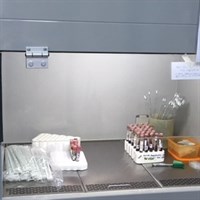 at TAMU two years ago, but it was wonderful to see the diversity of species that they had at FioCruz and to see how they housed and cared for their bugs-all information that will be informative for our TAMU colony.
at TAMU two years ago, but it was wonderful to see the diversity of species that they had at FioCruz and to see how they housed and cared for their bugs-all information that will be informative for our TAMU colony.
Working in the Chagas disease system in an endemic environment was both enlightening and rewarding (finding a T.cruzi positive animal is more common in Brazil than in our Texas environment). It was also wonderful to work on part of a project that is a part of such a large and established research facility. Chagas research is relatively new in the US, where our first human case was documented in 1950s and the first canine case the 1970s, whereas Carolos Chagas, a Brazilian physician at FioCruz, first discovered Chagas disease in 1909. Therefore, it was educational and inspirational to be in this environment.

